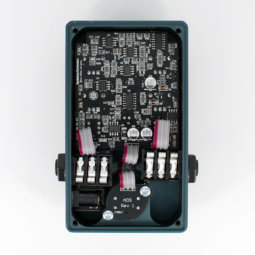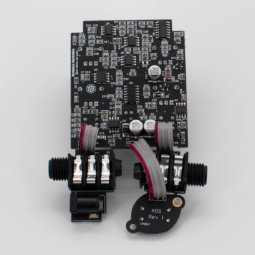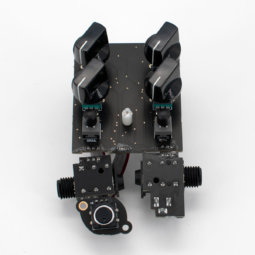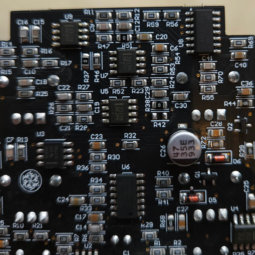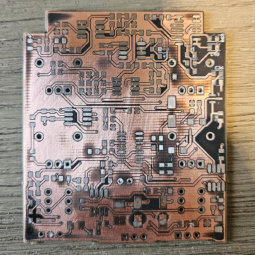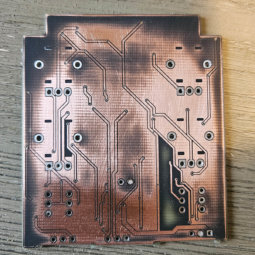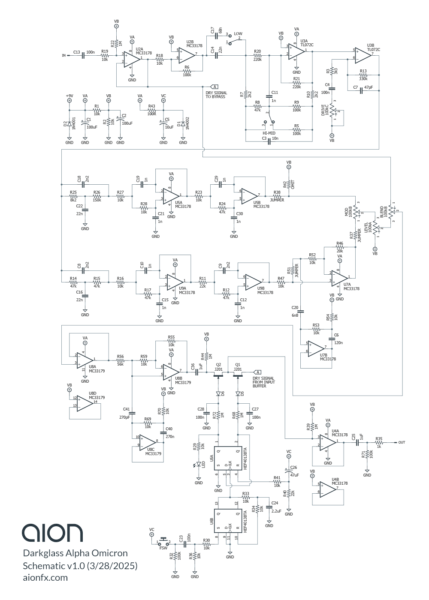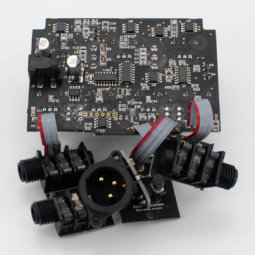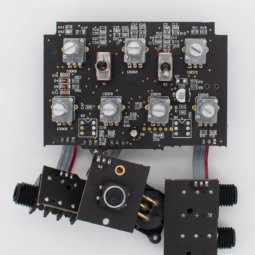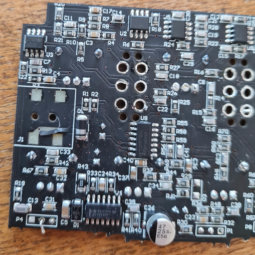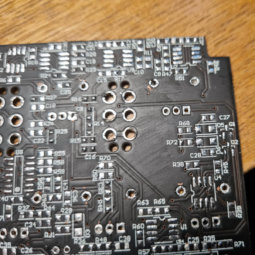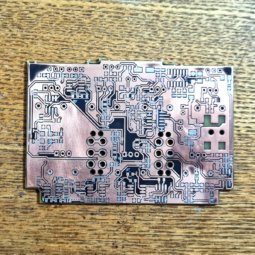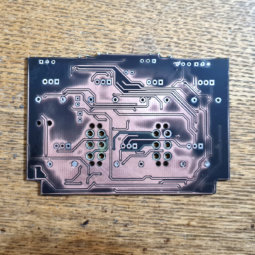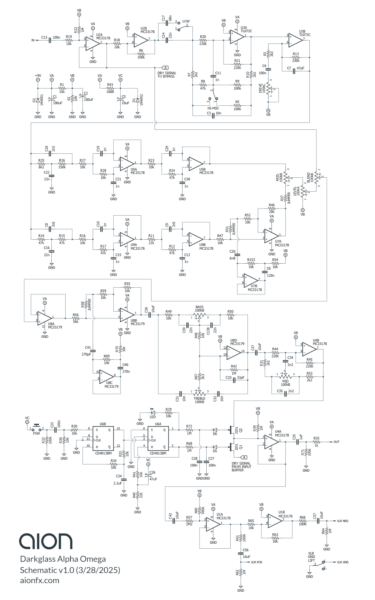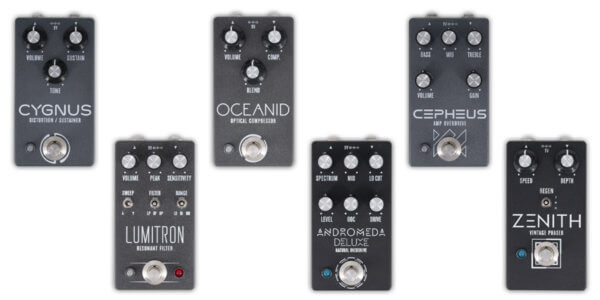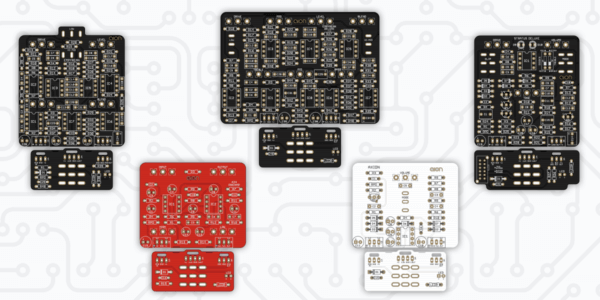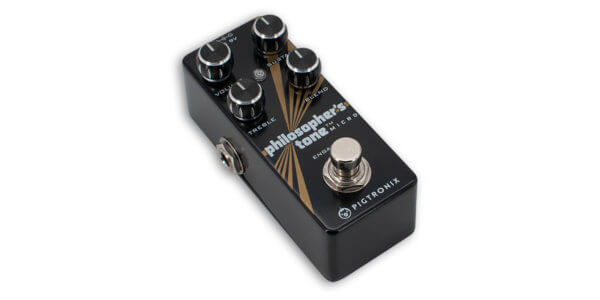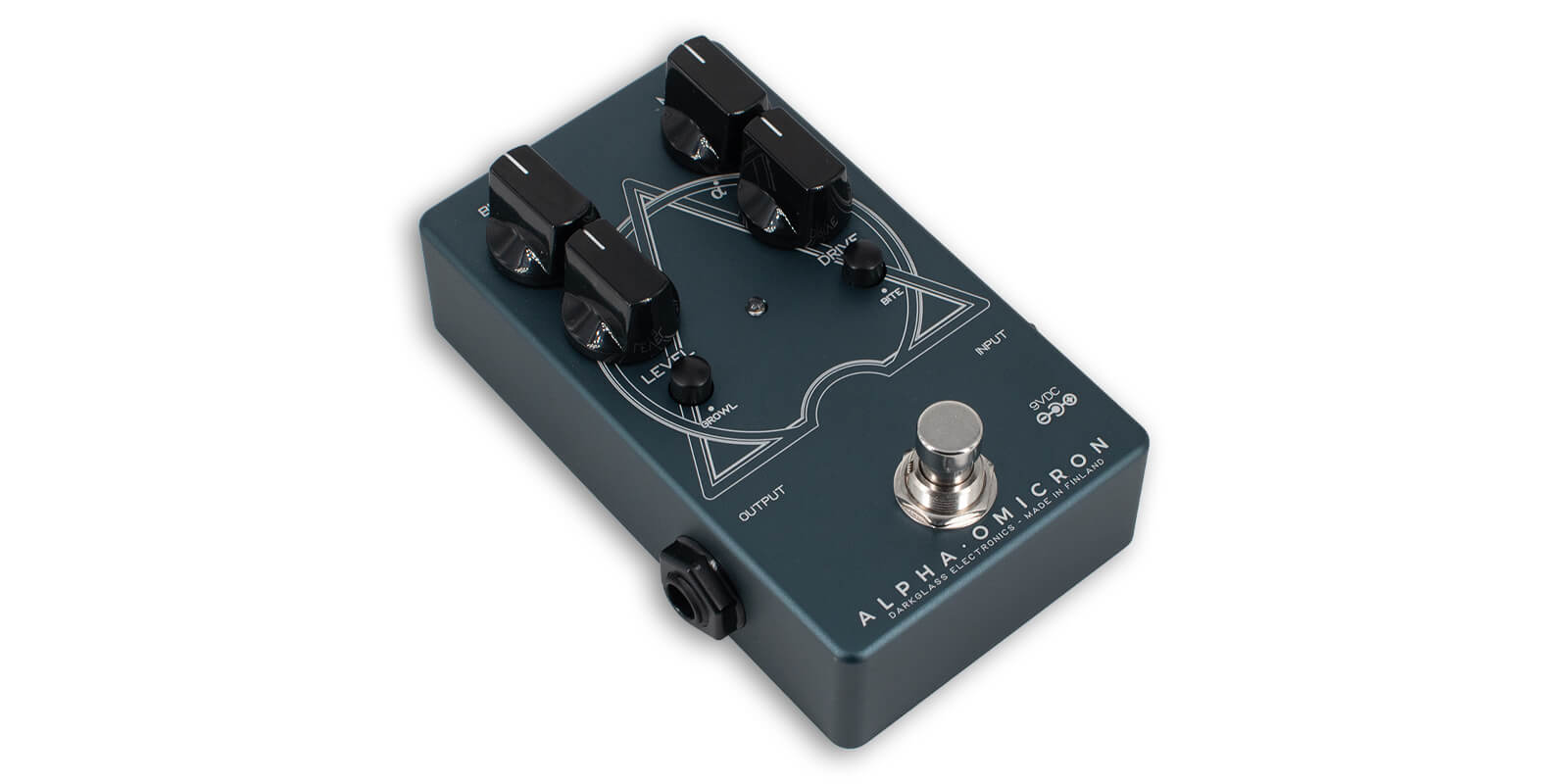
Tracing Journal: Darkglass® Alpha Omega & Alpha Omicron
Today we’ve got a two-for-one tracing journal: the Darkglass® Alpha Omega and Alpha Omicron. These pedals were released in 2017 and designed in collaboration with the Australian bassist Jon Stockman of Karnivool. Here’s a demo of the Omicron:
The Alpha Omicron is the base circuit, and the Alpha Omega expands it with a 3-band EQ, XLR output, and parallel out (analogous to the difference between the B3K and B7K).
While Darkglass often reuses circuit design blocks, their circuits are nevertheless always interesting, and when we traced the Duality we found that it was different enough from the B3K that it was well worth the effort. We’ve had our eye on the two Alphas for awhile, so when we came across them for a decent price, it was time to jump in and see what was inside.
Alpha Omicron
Tracing photos
Schematic
Alpha Omega
Tracing photos
Schematic
Analysis
Like the Duality, these two circuits are very much distinct from the B3K and are not adapted from anything else out there that we are aware of. They share many design elements in common with the B3K and Duality, notably the first half of the circuit up through the Drive control, as well as extensive use of second-order Sallen-Key lowpass filters (U5 and U9) and bridged-T passive filters to scoop the midrange.
But unlike the B3K and Duality, there are no mu-amps, CMOS drive stages, or comparators. There are also no clipping diodes as in most other drive effects. The “Alpha” and “Omega” circuit paths are described as distortion circuits, but they are really just a series of filters to shape the tone. The distortion comes entirely from overdriving standard op-amps, with very careful filtering before & afterward. It’s likely that they paid very close attention to the type of op-amp in the circuit, since different op-amps have drastically different clipping characteristics.
All in all, it’s a very interesting circuit to study, and well worth its reputation. Darkglass is truly putting in the work to shape the bass tones of modern prog/metal from scratch, and it’s refreshing to see how it’s done.
Omicron-Omega differences
Other than the major features—the 3-band tone stack, XLR output, and parallel output of the Omega—we only found only two small differences in the core circuit.
- R13 is 330k in the Omicron and 300k in the Omega. This increases the maximum amount of drive slightly in the Omicron.
- R25 is 8.2k in the Omicron and 8.06k in the Omega. This has a minuscule effect on the filter frequency of the bridged-T filter of the Omega distortion path.
Both are insignificant, and may just represent changes part availability, especially the 8.06k-8.2k change. Darkglass is known for making frequent but extremely minor changes to their circuits, so it could also be the case that the changes were made to both circuits at the same time, and the variation is due to the units being produced at different times.
Fixed tone controls
Interestingly, there are some relics of the design process left over in the circuit. We included the extra jumpered components in the schematics to illustrate. There are two places in the circuit where active inductors[1] are used:
- At the end of the Alpha distortion path before the blend
- After the two distortion paths are blended together (in the Alpha Omega, before the 3-band tonestack; in the Alpha Omicron, immediately before the end of the circuit)
These are commonly used to dial in a specific frequency to boost or cut. You can see this in pedals like the BOSS HM-2 Heavy Metal or Ibanez DS-830 Distortion Master (both of which use transistors instead of op-amps, but the application is the same). In this case, the frequency is cut. The active inductor has the advantage of being less aggressive than a standard gyrator.
It looks as though there was originally a full tone control in both of these spots during the design phase, allowing them to fine-tune the sound, and in the final version they opted to leave them turned all the way down. The active inductor is connected directly to the non-inverting input of the op-amp via a 0R resistor, and to the inverting input via a 10k resistor. By changing the proportion of these resistors (e.g. 2k and 8k) you could simulate the tone control in a different position.
Or, you could easily hook up a 10k potentiometer to all three points—the outside of each resistor and the junction in the middle—and have the ability to boost, cut, or flatten the center frequency. This wouldn’t be useful given the abundance of other tone control options, particularly in the Omega, but it would work.
Component numbering
All the component numbering is the same between the two, indicating that the Alpha Omega was likely the first to be designed and the Omicron was a simplified version. As an example, the Omicron has resistors numbered as high as R72, but only 55 resistors in total. Additionally, U4 and U8 are fully utilized in the Omega, but in the Omicron, they each have one op-amp disabled (tied to the bias voltage).
If the Omicron was designed first, they would just have used one fewer IC, but since it was a reduced version of the Omega, it may have been logistically simpler to do it the way they did.
Midrange toggle switch
At first glance, the midrange switch (called “Bite” in the original unit) may look like an unfamiliar topology, especially if you’re only looking at the Omicron schematic. But if you reference the Omega, you’ll notice this stage is an exact copy of the midrange tone control stage near the end of the circuit, just with the values tweaked.
- In one position of the toggle switch, it simulates a 100k pot at minimum rotation: R8 is bypassed and R9 provides 100k of resistance.
- In the other position, R5 is in parallel with R9 for ~50k total resistance, and R5 provides 47k resistance, which simulates the pot in the center position (flat response).
The second position is described by Darkglass as a midrange boost at 2.8k, but it’s technically just keeping the mids flattened when engaged, and the default position is a mid cut.
Op-amp selection
The MC33178 op-amp is a favorite of Darkglass, used in nearly all of their pedals in some capacity. For the Omega/Omicron circuits in particular, much of the sound relies on overdriving the op-amps directly, so the specific type is important.
The 33178 is an older op-amp, still readily available in SMD format but nearly impossible to find in DIP. We cross-referenced datasheets for many different op-amps and found that the RC4559P is a near-exact match.
It could be the case that they are truly identical and that the slight differences are due to different measurement techniques between ONSemi and Texas Instruments. But either way, it’s close in the ways that matter—slew rate, noise figure, and gain-bandwidth product—and in our testing it sounded the same.
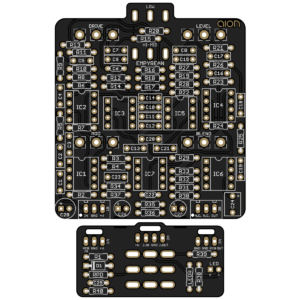 Empyrean
Empyrean
Along with the trace, we’re releasing versions of both the Alpha Omicron and Alpha Omega, called the Empyrean and Empyrean Deluxe.
The Empyrean Dual Distortion is a direct adaptation of the Alpha Omicron, adapted to true bypass instead of electronic CMOS bypass. Otherwise, all the features are identical to the original.
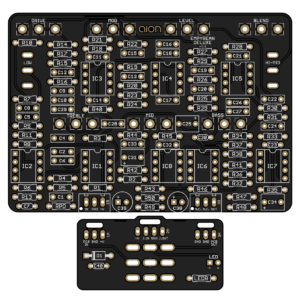 Empyrean Deluxe
Empyrean Deluxe
The Empyrean Deluxe Distortion is an adaptation of the Alpha Omega. It has the same audio path as the original, but it omits the XLR and parallel out, which can easily be done externally.
Notes & references
- Note that these look a lot like gyrators, but they are properly called active inductors, which is a slightly different configuration than a gyrator. If you’re curious, you can read more at Elliot Sound Products. ↩
